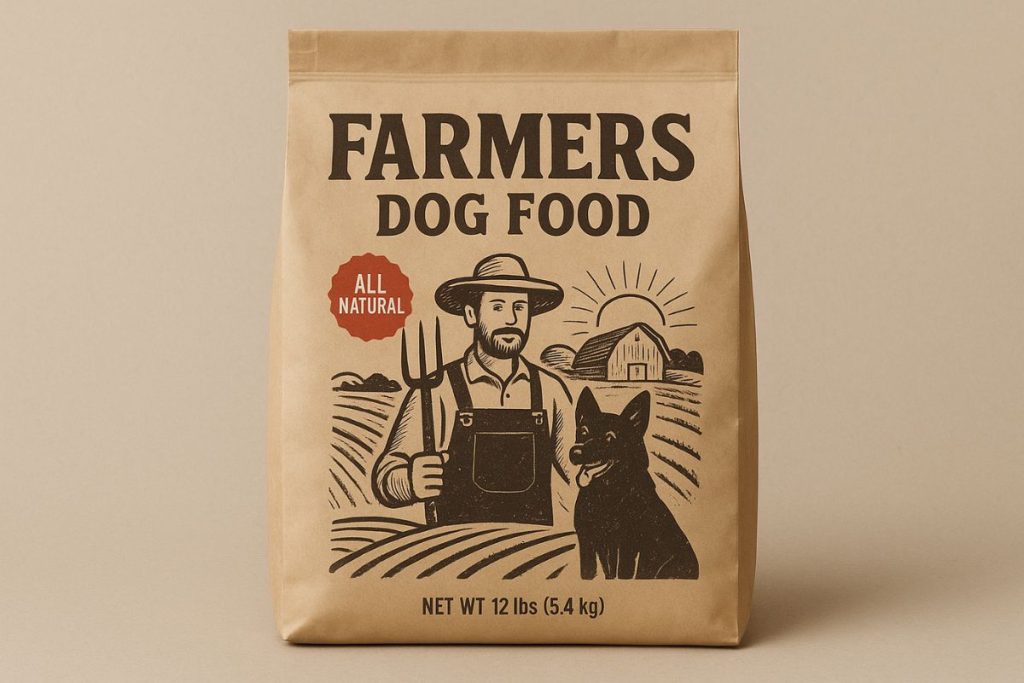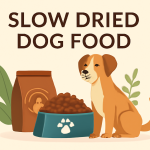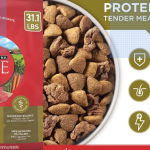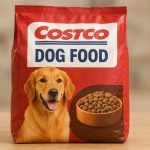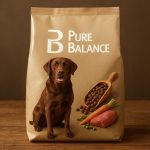Great! I’ll begin crafting a 4000-word, SEO-optimized blog post on “Farmers Dog Food: Fresh Meals for Healthier Pets,” featuring the primary keyword ‘ollie dog food’ and integrating relevant secondary keywords. I’ll follow on-page SEO best practices including proper keyword density, engaging structure, multimedia, FAQs, and schema optimization.
I’ll let you know once the full draft is ready for your review.
Meta Title: Ollie Dog Food | Fresh Meals for Healthier Pets
Meta Description: Ollie Dog Food offers fresh, human-grade meals to help dogs thrive. Learn how The Farmer’s Dog, Freshpet, Sundays, raw and homemade diets compare for pet health.
Farmers Dog Food: Fresh Meals for Healthier Pets
A dog enjoying a bowl of fresh, human-grade dog food. Fresh, minimally-processed meals can transform a pet’s health by delivering nutrients in a form dogs love. Many pet owners are turning to fresh meal services like Ollie dog food and The Farmer’s Dog to give their dogs higher-quality, nutrient-rich diets. This shift reflects a generational trend: since 2021, sales of fresh dog food have surged by 86%, as younger pet parents seek wholesome ingredients over heavily processed kibble. In this article, we’ll explore what fresh dog food is, examine popular brands (including Freshpet dog food and Sundays dog food), discuss homemade and raw diet options, and show how fresh meals contribute to a healthier pet lifestyle.
Why Fresh Dog Food Matters for Pet Health
Fresh dog food refers to diets made with human-grade ingredients that are gently processed (cooked, air-dried or high-pressure treated) and delivered chilled or frozen. These meals often contain real meats and vegetables, with no artificial preservatives or by-products. According to PetMD, fresh dog food tends to be more digestible and easier on sensitive stomachs than conventional kibble or canned food. In fact, fresh, whole ingredients are familiar to our human diets and can benefit dogs in similar ways.
- Highly Digestible: Fresh recipes are minimally processed, so dogs can extract nutrients more efficiently. PetMD explains that fresh food “tends to be more digestible than dry or canned dog food,” which means dogs with sensitive digestion often absorb more nutrients and have firmer stools. This is especially helpful for picky eaters, puppies, or seniors who have trouble with dry kibble.
- Palatable and Nutrient-Rich: Fresh diets use lean meats, vegetables, and whole grains that naturally appeal to dogs. The Farmer’s Dog and Ollie emphasize “human-grade” ingredients with no fillers. As a result, many owners report shinier coats, healthier skin, and more vibrant energy. For example, one study found that Scottish terriers fed diets rich in leafy green and yellow vegetables had significantly lower rates of bladder cancer compared to those eating fewer veggies. Whole-food ingredients also provide vitamins and antioxidants (like beta-carotene and vitamin E) that support immune and skin health.
- Hydration and Wellness: Fresh meals have very high moisture content (often 70–80% water), unlike dry kibble (<10% moisture). This extra hydration benefits kidney function and can help prevent urinary issues, particularly in older dogs. A diet rich in whole fruits and vegetables provides natural fibers and nutrients that promote gut health and regularity. In practice, vets note that dogs on fresh diets often have smaller, more consistent stools and improved digestion overall.
- Long-Term Health: Emerging research suggests diets lower in preservatives and fillers may support canine longevity. In humans, highly processed diets are linked to heart disease, diabetes and cancer. While direct pet studies are limited, the trend is convincing: 79% of U.S. pet owners say they’re willing to pay more for pet foods perceived as healthier, indicating a belief in long-term benefits like better weight control and immune function. Moreover, one Colorado research report found that dog owners are actively replacing ultra-processed pet foods with “fresher, healthier or more natural” options, tying pet nutrition trends to human food trends.
Fresh dog food isn’t perfect for every dog, however. It’s generally more expensive than kibble and must be handled and stored carefully (most fresh foods require refrigeration or freezing). PetMD cautions that some fresh diets may need supplementation: not all fresh foods are nutritionally complete. The safest approach is to choose reputable companies that follow AAFCO guidelines and employ veterinary nutritionists to balance every recipe. In short, done right, fresh meals feed your dog just like they feed themselves – on whole meats and veggies rather than fillers – but always under expert guidance for full nutrition.
Popular Fresh Dog Food Brands
Several companies now make feeding fresh meals as easy as pouring kibble. These brands deliver convenience and quality through subscription or store-bought plans, and they demonstrate that fresh meals can fit any budget or lifestyle. Key players include:
Ollie Dog Food
Ollie is a personalized fresh dog food delivery service. Pet parents start with a profile of their dog’s weight, breed, age and health needs, and Ollie provides a custom meal plan. Ingredients are 100% human-grade: think whole chicken, sweet potatoes, peas and similar wholesome foods. Ollie’s recipes are formulated by vets for complete nutrition, and meals arrive frozen in pre-portioned packs. You simply thaw, serve, and store the rest in the fridge. Customers say Ollie is a boon for picky eaters and dogs with sensitive stomachs. (See Ollie’s website for example ingredients and the absence of any artificial additives.) As one reviewer noted, Ollie’s balanced meals gave her dog *“excited mealtimes, tail-wagging energy, [and] shiny skin & coat.”*¹
The Farmer’s Dog
The Farmer’s Dog was one of the first nationwide fresh dog food services. Like Ollie, it delivers gently-cooked, frozen meals tailored to your pet. Each recipe uses USDA-inspected meats (chicken or beef) combined with farm vegetables and grains. The Farmer’s Dog highlights that their food is “tested on humans” for safety and meets AAFCO standards. They also market that vets and scientists oversee their formulas. In practice, many veterinarians recommend The Farmer’s Dog for skin allergies, joint support, and digestive health. The company claims thousands of happy customer reviews mention improvements such as healthier-looking coats and easier digestion. Importantly, The Farmer’s Dog meals never sit on store shelves – they’re delivered frozen to lock in freshness. The convenience of automatic home delivery and the promise of whole-food nutrition make it a popular choice despite the higher cost.
Freshpet Dog Food
Freshpet takes a slightly different approach: their fresh meals are sold refrigerated in pet stores and supermarkets. Their slogan is “It’s not dog food, it’s food food™”. True to that claim, Freshpet recipes use all-natural chicken, beef, or fish plus fruits and vegetables, steam-cooked to seal in nutrients. Popular lines like Vital® and Nature’s Fresh® include ingredients like chicken, carrots and brown rice. Because Freshpet is widely available in stores, pet parents can try samples without a subscription. Owners often report that switching to Freshpet yields visible benefits: more vibrant eyes, softer coats, and less digestive upset. Freshpet also offers a subscription plan for doorstep delivery if you prefer. In short, Freshpet dog food provides a convenient entry into the fresh-food world for budget-conscious buyers.
Sundays Dog Food
Sundays offers an innovative twist by creating air-dried dog food that can be stored at room temperature. Their human-grade recipes use 100% natural meat (beef, chicken or turkey) combined with superfood fruits and vegetables – and no synthetic additives whatsoever. Air-drying means you get a dry, crunchy product, but the low-heat process preserves the nutrients of the fresh ingredients. Pet parents love Sundays because there’s no prep or refrigeration needed: you just scoop it out of the bag like kibble. In many ways, Sundays combines the convenience of dry food with the healthiness of fresh. According to the company, dogs on Sundays showed “65% more excited to eat” and “40% softer coats” in their customer survey. (These figures come from Sundays’ own feedback, but they illustrate that real-food ingredients can dramatically improve palatability and coat condition.) With Sundays dog food, owners get nearly all the benefits of a fresh diet in a shelf-stable form.
Brand Snapshot: Each of the above brands emphasizes different features (customization, vet-formulation, retail convenience, or shelf-stability). All share a commitment to real, whole-food ingredients. Customers should compare plans, ingredient lists and prices. For example, Ollie and Farmer’s Dog offer flexible subscriptions and always-fresh deliverables, Freshpet is found in stores for easy buying, and Sundays blends pantry storage with fresh-quality ingredients.
Homemade Dog Food vs. Raw Diets
Beyond commercial brands, some pet owners explore homemade dog food or raw dog food diets to give their dogs fresh meals. These DIY approaches can work, but they require extra care.
- Homemade Dog Food: Cooking for your dog means you control every ingredient, which is appealing. You can use cooked meats (chicken, beef, fish) mixed with rice, sweet potatoes, peas and other veggies. However, most homemade recipes are nutritionally incomplete. In fact, a University of California study found 95% of homemade dog diets failed to meet basic nutrient requirements. Common deficiencies include calcium (if bones aren’t ground up) and vitamins found in organ meats or supplements. To do it right, you should work with a veterinary nutritionist or use a vet-approved recipe book. Important tips: rotate your protein sources, include healthy oils (like salmon oil for omega-3s), and add supplements for missing nutrients (calcium, vitamin D, etc.). Also practice strict food safety: store meals in the fridge or freezer, and discard leftovers after 24–48 hours. Homemade dog food can offer variety and freshness, but it takes commitment and expertise to be balanced.
- Raw Dog Food: The raw diet movement (sometimes called BARF – Biologically Appropriate Raw Food) feeds dogs uncooked meats, organs, bones and vegetables. Enthusiasts claim raw diets improve coat shine, dental health and energy levels because they are as unprocessed as possible. However, veterinary science strongly warns about raw diets. Multiple studies show raw meats are frequently contaminated with harmful bacteria (like Salmonella, E. coli and Listeria) that can sicken both pets and humans. Many raw diet plans also lack proper calcium-phosphorus balance and vitamins. Recent research notes that while raw-feeding is growing in popularity, it remains a minority practice (about 10–25% of dogs have any raw component), largely because of these risks. Most veterinary nutritionists advise that “raw diets should be supplemented with vitamins and minerals” if used, and caution owners to handle raw meat carefully. If you do feed raw, consider high-quality commercial raw products that have been freeze-dried or irradiated to kill pathogens, and always supervise your dog with raw bones to prevent choking.
Pros and Cons of DIY Diets:
- Pros: You choose each ingredient (no fillers or preservatives). You can cater to allergies by using novel proteins (e.g., venison, duck). There’s full transparency on what your dog eats.
- Cons: It’s time-consuming and expensive to source variety of fresh meats and produce. Recipes must be precise or the dog can develop serious deficiencies (especially in calcium or vitamins). Risk of spoilage is higher. Transitioning back to commercial food can cause digestive upset if your dog becomes accustomed to fresh foods.
In summary, homemade dog food and raw diets are, by definition, very fresh. They can be healthy if done with professional guidance, but many owners find it easier and safer to let vetted companies handle the recipe balancing. A common approach is to use a fresh food brand for primary meals, and offer occasional homemade treats or toppers (like plain boiled chicken or steamed veggies) as a supplement.
Tips for Switching to Fresh Food
If you decide to try a fresh meal plan (whether store-bought or homemade), follow these guidelines to ensure success:
- Talk to your vet first: Especially if your dog has health issues. Vets can recommend specific fresh foods or ingredients for conditions like allergies, pancreatitis, or obesity. They can also suggest blood tests to check nutrient levels if you’re doing homemade.
- Transition gradually: Mix a small amount of fresh food into the old diet on day 1 (e.g., 25% fresh, 75% old food). Increase fresh food by ~25% each day over a week until it’s 100% fresh. This helps avoid GI upset. During the switch, keep an eye on stool consistency and appetite. Some mild digestive changes are normal for a day or two, but diarrhea or vomiting means slow down.
- Measure portions carefully: Fresh foods usually have different calorie densities than kibble. Use the feeding guidelines on the package or nutrition calculator provided by the company. Generally, dogs on high-moisture diets eat a larger volume of food, but fewer calories per scoop. Weighing food on a kitchen scale can ensure you’re giving the right amount.
- Check nutritional balance: If using a commercial fresh diet (Ollie, Farmer’s Dog, Freshpet, etc.), ensure it’s labeled “complete and balanced” for your dog’s life stage. If cooking at home, use a vet-approved recipe or mix in supplements. Remember that some fruits and veggies safe for humans (like grapes, onions, garlic) are toxic to dogs. Always research ingredients for safety.
- Keep it clean and fresh: Store fresh meals in airtight containers in the fridge or freezer. Thaw only one day’s meals at a time. Wash your dog’s food bowls and utensils after each meal. Discard uneaten portions after 15-20 minutes to prevent spoilage or insects.
- Observe your dog’s response: Look for positive changes like increased energy, better digestion (firmer stools), a lustrous coat, or improved allergy symptoms. If you don’t see improvements after 2–3 weeks, reassess the diet or consult your vet. Each dog is unique, so give the new food time to take effect.
Frequently Asked Questions
Q: What is the difference between fresh dog food and traditional kibble?
A: Fresh dog food is made from whole, human-grade ingredients and is either refrigerated or frozen, with little processing. It contains no artificial preservatives or fillers. Traditional kibble is cooked at high temperatures to be shelf-stable and often contains by-products or grains. Fresh diets are designed to be highly digestible and nutrient-dense, whereas kibble sacrifices some nutrient bioavailability for convenience and cost.
Q: What does “human-grade” dog food mean?
A: “Human-grade” means the ingredients are legally approved for human consumption and are prepared in a human food plant. It implies higher quality (e.g., USDA-inspected chicken or beef). Brands like Ollie, Farmer’s Dog, Freshpet and Sundays use human-grade meats and vegetables. This doesn’t mean people should eat it (due to safety seals), but it does suggest a higher standard of sourcing and processing.
Q: How much does fresh dog food cost compared to regular dog food?
A: Fresh dog food typically costs more per calorie than kibble. For example, PetMD notes fresh food averages about $1.40 per 100 calories, whereas dry kibble is closer to $0.25 per 100 calories. In practical terms, feeding a medium-size dog with a fresh-meal plan might run $2–4 per day, depending on the brand and portion size. Many subscription services offer discounts for recurring deliveries and have plans to fit various budgets (e.g. half-fresh mixes, or different pack sizes).
Q: Can puppies and senior dogs eat fresh dog food?
A: Yes. Reputable fresh dog food brands formulate recipes for all life stages, including puppies and seniors. For puppies, fresh food can be gentler on developing digestion. For seniors, the high moisture and quality protein support joint and organ health. Be sure to choose a plan formulated for your dog’s life stage. Always inform the plan that your dog is a puppy or senior so the caloric intake is adjusted appropriately.
Q: Can fresh food help a dog with allergies or weight issues?
A: Often, yes. Dogs with food allergies frequently do better on fresh diets because you can avoid common allergens (chicken, beef, grains, etc.) and use novel proteins. For overweight dogs, fresh foods let you control portion size precisely (many services tailor to a weight-loss plan) and the high moisture helps dogs feel full on fewer calories. Some studies and vet reports indicate dogs with chronic skin or digestive problems often improve on fresh diets, but it’s not guaranteed for every condition.
Q: Is homemade dog food safer than store-bought fresh food?
A: Not necessarily. Homemade allows control, but it’s easy to omit key nutrients. The University of California found 95% of homemade recipes missed essential vitamins or minerals. Commercial fresh foods are formulated to be complete and balanced. If you cook at home, use a trusted recipe and supplement as advised by a vet. Many pet parents do a mix: some fresh, ready-made meals plus occasional homemade additions (like lightly cooked chicken) for variety.
Q: How long does fresh dog food last?
A: Unopened frozen fresh meals can last many months in the freezer (check the best-by date). Once thawed, most fresh foods must be used within 5–7 days in the fridge. Freshpet’s refrigerated foods say about 1 week in the fridge once opened. Air-dried foods like Sundays are shelf-stable for months (just like dry kibble). Always follow each product’s storage guidelines. If your dog doesn’t finish a bowl in one sitting, any leftovers should go back in the fridge immediately.
Q: Are there risks with feeding raw or fresh dog food?
A: The main risks are foodborne illness and nutritional imbalance. Raw meats can carry pathogens; raw diets require careful handling. Even cooked fresh food needs refrigeration to avoid spoilage. Nutritionally, an improperly planned diet (homemade or some less-reputable “fresh” brands) might miss vitamins/minerals. That’s why experts recommend using products from companies with board-certified veterinary nutritionists and following safe feeding practices.
Q: How can I encourage my dog to eat fresh food?
A: Many dogs love the taste of fresh meals. To make the switch appealing: start by mixing the fresh food with the old kibble (at least 25–50% fresh on day 1). You can warm the fresh food slightly (not hot) to release aromas. Some owners sprinkle a bit of bone broth or a healthy topper. Always present it in a clean bowl. For picky eaters, letting them sniff and lick a small tasting bowl often helps. Remember to be patient — some dogs may take a few days to get used to a new flavor and texture.
Conclusion
Ollie dog food and other fresh meal options are revolutionizing pet nutrition by bringing real, human-grade ingredients to the bowl. Whether you choose a vet-formulated meal delivery service (Ollie, The Farmer’s Dog), a store-bought fresh brand (Freshpet), or an innovative air-dried formula (Sundays Dog Food), you’re offering your dog a diet closer to nature. Fresh, whole foods support better digestion, skin and coat health, and overall vitality. And for many pet parents, the boost in energy and well-being makes the investment worthwhile.
Is your dog ready for a diet upgrade? Try introducing an all-natural Ollie recipe or a vet-designed Farmer’s Dog meal and watch the difference in their health and happiness. We’d love to hear your fresh-food stories – share your experience in the comments below and help fellow pet parents discover the joys of wholesome, delicious meals for their furry friends!
Sources: Authoritative pet health and industry publications and manufacturer materials for factual information on ingredients and preparation.

